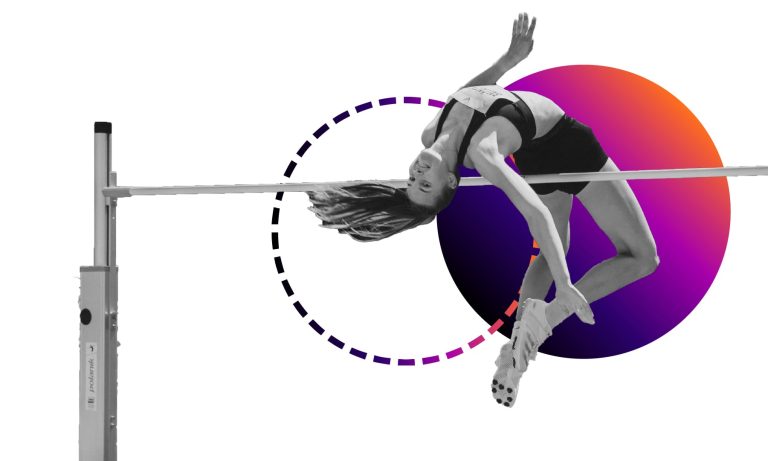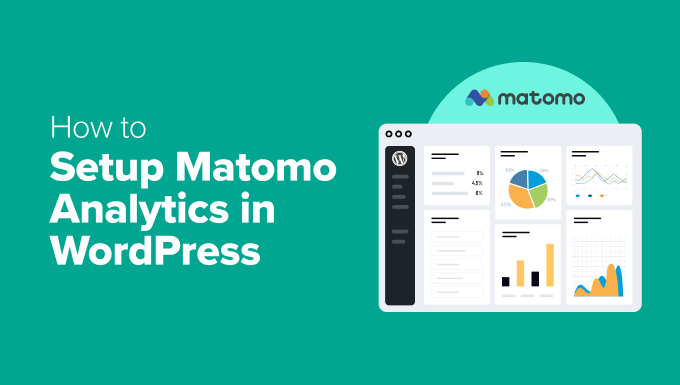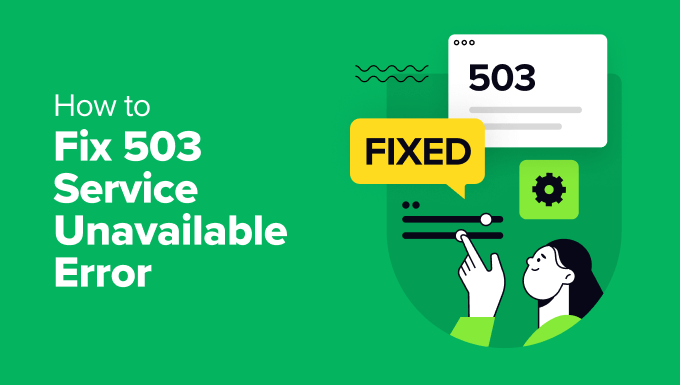The first beta for WordPress 6.9 is now available for testing. When it’s officially released later this year, it will be the second and final major WordPress update of 2025.
This version will bring big improvements to writing, collaboration, and performance. For example, you’ll see block-level Notes for feedback, the ability to hide blocks on the front end, and a Command Palette that now works across the dashboard.
There will also be plenty of new blocks and noticeable speed boosts.
In this article, we’ll show you what’s coming in WordPress 6.9, complete with screenshots and examples of how each feature works.
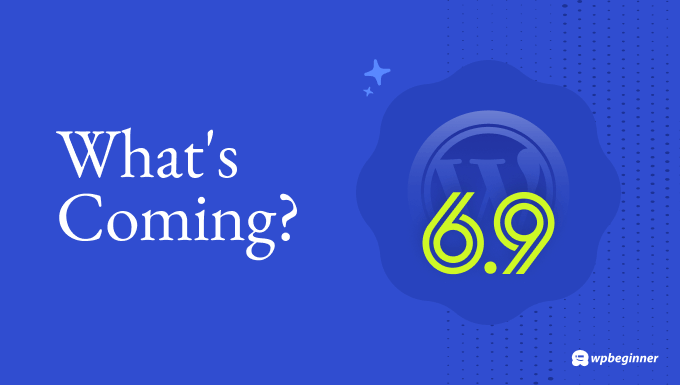
ℹ️ Note: This beta release is for testing and development only. Please do not install, run, or test this version of WordPress on a production site (live website your visitors see) or mission-critical website.
Instead, we recommend using a staging site or a local install. You can test WordPress 6.9 Beta by installing and activating the WordPress Beta Tester plugin.
Here’s a quick overview of the changes coming in WordPress 6.9:
Collaborate with Block-Level “Notes”
WordPress 6.9 is taking the first step toward a more collaborative editing experience, similar to Google Docs.
A new feature called “Notes” (formerly known as ‘Block Comments’) lets you attach comments directly to individual blocks.
Simply click on a block and, under the block toolbar, click on the three-dot button and select the ‘Add note’ option to leave a note.
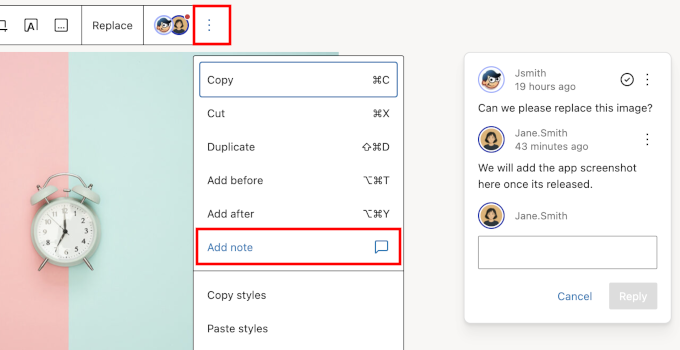
Users can reply to a note by simply typing their reply below it. They can also click the check button to mark a note as resolved.
You can also view all the notes attached to a post or page by clicking on the Notes button at the top-right corner of the Edit screen.
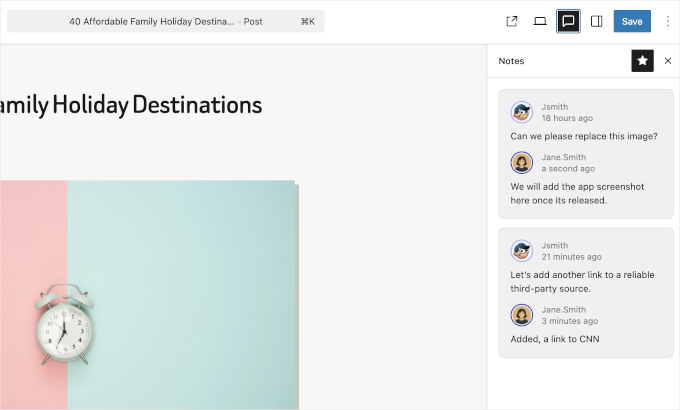
From here, you can click on a note to view the block where the note was added.
This allows teams, agencies, and freelancers to leave feedback and share ideas directly within the editor. It’s perfect for real-time collaboration and helps create a more efficient editorial workflow.
But don’t worry, because these Notes are only for the editor and will not appear on your live site.
Hide Blocks on the Front End (Block Visibility)
Another major addition in WordPress 6.9 is the ability to hide blocks on your live site.
This new “Hide Blocks on Frontend” feature lets you keep blocks in the editor while making them invisible to your visitors.
To hide a block, just click the three-dot menu in the block toolbar and then select ‘Hide’.
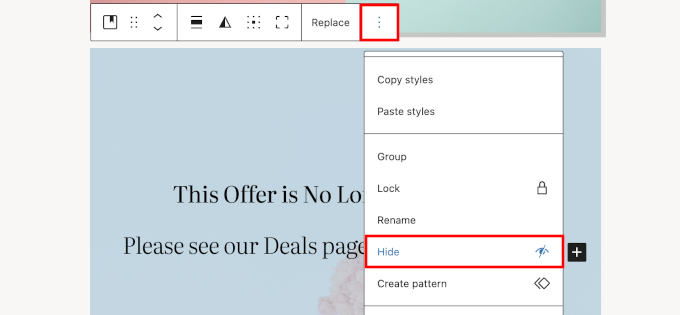
The hidden block will disappear from the block editor canvas. You can now save your post or page and preview it, and the block will not appear on your live site.
To restore a hidden block, click on the Outline button in the editor toolbar. There, you will see your hidden block. You can now click on the visibility button to make the block visible again.
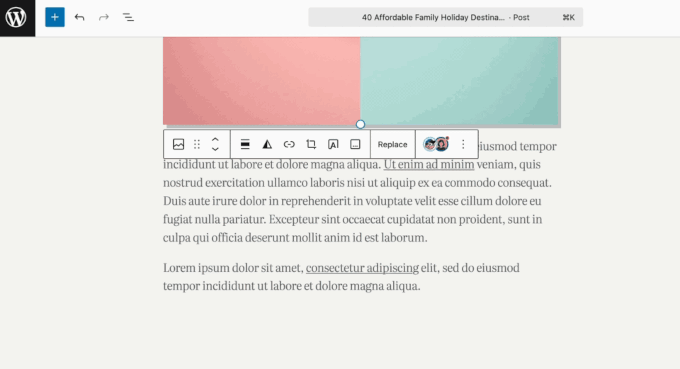
This is perfect for staging new content, exploring alternate designs, or leaving internal notes without creating separate drafts.
Improved Template and Theme Switching
Have you ever worked on a custom template in the Full Site Editor and later found it missing when you switched themes?
WordPress 6.9 will fix this problem. Your custom templates will be retained even when you switch themes, and you can reuse them with other themes.
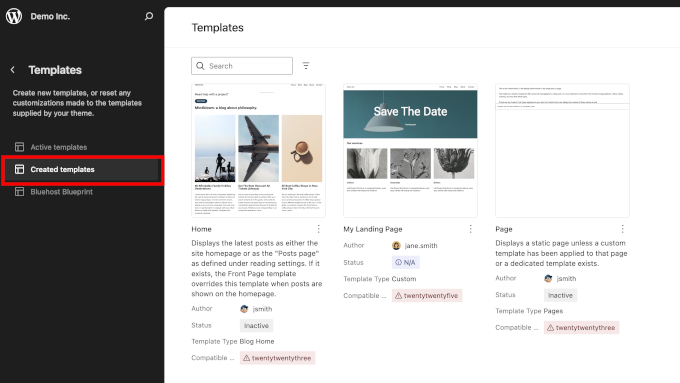
This update also gives you more control over your templates.
You can now create drafts before publishing, activate or deactivate templates as needed, and easily duplicate them.
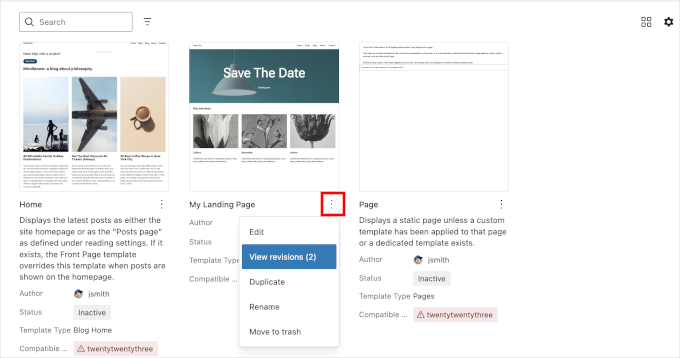
New and Enhanced Blocks
This release also expands your design options with several new blocks.
1. Accordion Block
Previously, many WordPress users were using the Details block to mimic the functionality of an Accordion element.
WordPress 6.9 now comes with an Accordion block, which is accessible and supports nested blocks.
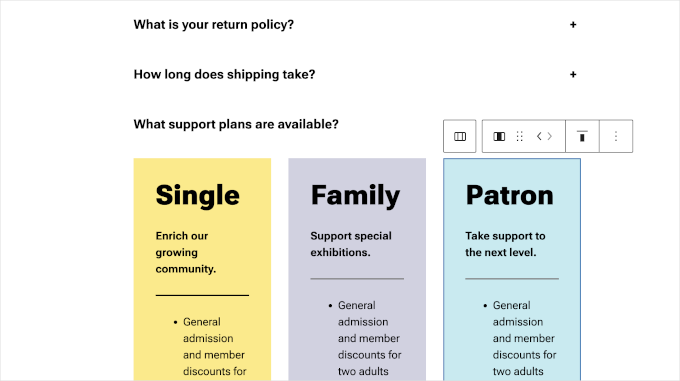
2. Terms Query Block
This new block allows you to display terms for a taxonomy.
For example, it can be used to display a list of categories and tags (two default taxonomies).
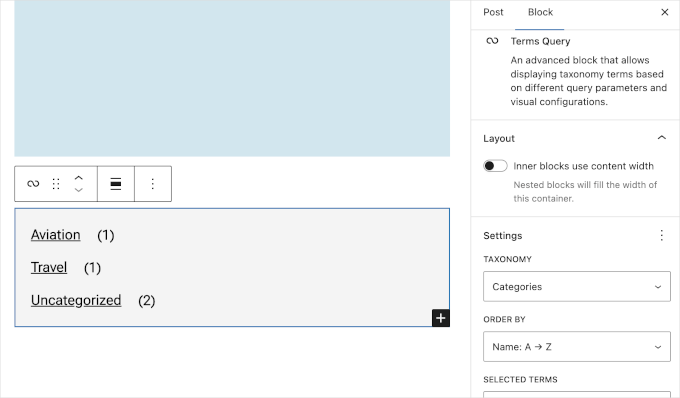
3. Math Block
Currently, users need an external plugin to write math equations in WordPress.
With WordPress 6.9, this will be fixed with a Math block, which allows users to easily write math equations in the block editor. This can be helpful for educational blogs and online courses.
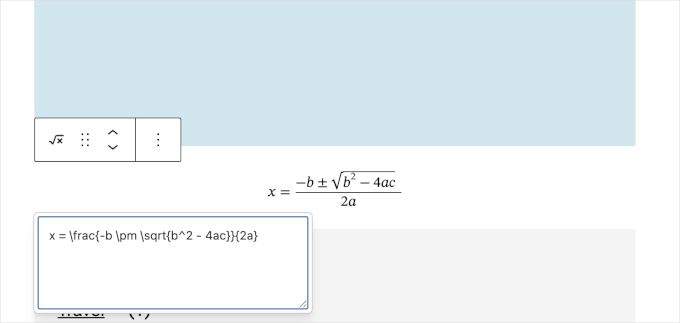
4. Time to Read Block
The new Time to Read block will allow users to display the time to read or the word count of an article. It can be added to individual posts or pages, or users can add it to their templates.
It’s a small touch that can make a big difference. When readers see how long a post will take to read, they’re more likely to click through and actually finish it.
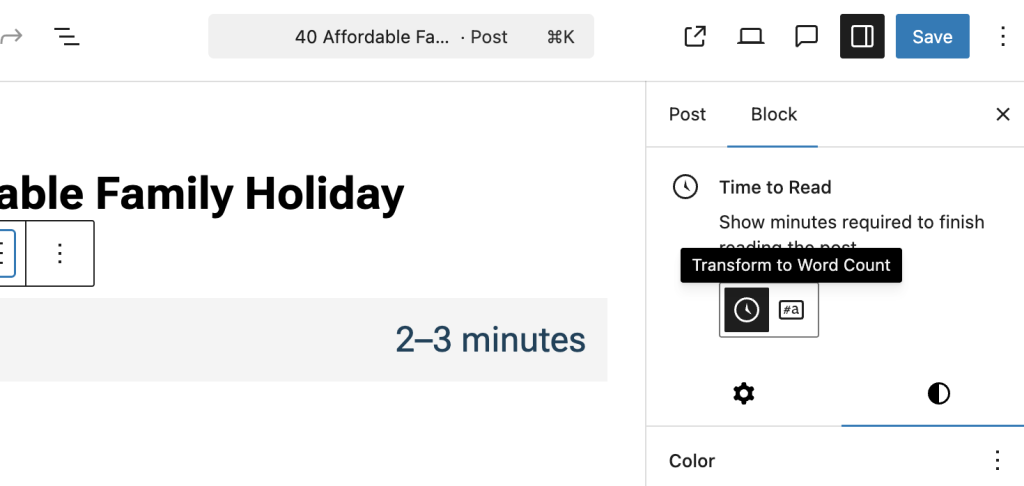
Enhanced Design Options in Several Blocks
Paragraph and heading blocks now have a “Fit text” formatting option.
This feature, also known as ‘Stretchy Type’, automatically scales your text to fill its container, which is perfect for hero sections.
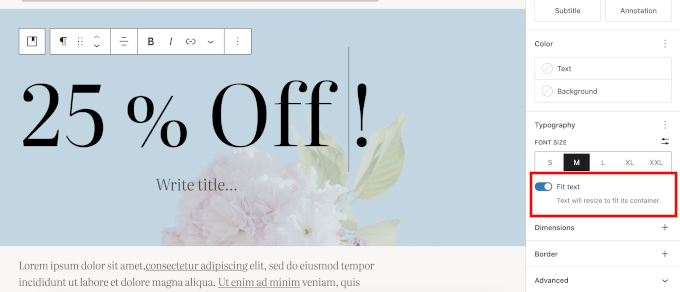
AI Developments in WordPress Core
WordPress 6.9 will introduce the foundation for AI-powered workflows inside WordPress Core.
This effort is part of the new AI Building Blocks for WordPress initiative, which includes the Abilities API, PHP AI Client SDK, MCP Adapter, and the AI Experiments Plugin.
What is the new Abilities API?
Abilities API is a registry of everything WordPress can do in a machine-readable format.
For years, WordPress has offered thousands of functions through core software, plugins, and themes — but these were only accessible through code.
The Abilities API changes that by creating a shared language that both humans and AI systems can understand.
Each plugin or theme can “register” what it’s capable of — for example, analyze SEO content, generate reports, or back up your site — along with clear inputs, outputs, and permissions.
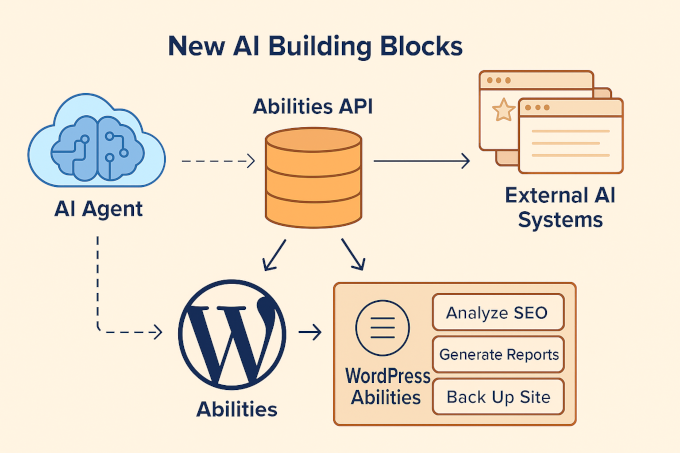
Here’s what makes this important: once abilities are registered, AI tools can discover and use them automatically.
That means that an AI agent like ChatGPT or Claude could soon run WordPress tasks such as optimizing posts, creating pages, or triggering plugin actions — all safely and securely.
Developers can start experimenting with the Abilities API with WordPress 6.9. There is already an MCP integration available for WooCommerce.
Command Palette Available Everywhere
The Command Palette in WordPress is a huge time-saver. You can open it by pressing Ctrl + K on Windows or Command + K on a Mac.
It provides quick shortcuts for common actions on your website, like creating a new post or previewing a post in a new tab.
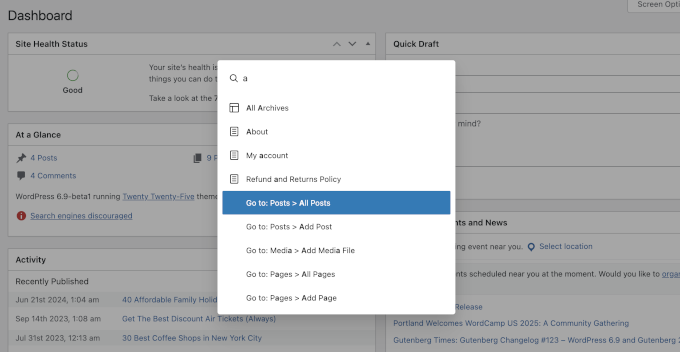
In WordPress 6.9, it will be available across the entire WordPress dashboard, not just the Site Editor.
This lets you quickly search, jump to specific admin screens, or trigger actions from anywhere, making navigation much faster.
Performance and Speed Upgrades
WordPress 6.9 also delivers major performance improvements for creating a smoother, faster experience for your visitors.
Here are some of the key upgrades:
- Output Buffering: A new “template enhancement output buffer” function is introduced to improve performance. (#43258)
- Faster Loading for Classic Themes: Block styles in classic themes will now load “on demand,” which means your site won’t load CSS for blocks you aren’t using on a page. [#64099]
- Less Render-Blocking: The Emoji detection script has been moved to the footer, helping your pages render faster. [#64076]
- Improved Server Performance: Cron jobs (scheduled tasks) will now run at shutdown instead of during page load. This helps reduce the impact on your server’s response time (TTFB). (#63858)
Under the Hood Changes (for Developers)
This release also brings several other powerful updates for developers.
- Improvements to the Interactivity API will power client-side navigation. This will enable cool new features in the future, like instant search or submitting comments without a page reload. (#71603)
- The Block Binding API has also been improved, allowing developers to bind more content, like image captions, to custom fields.
Finally, it’s important to note that WordPress 6.9 will not include a new default theme. The development team’s focus has been on improving the editor, APIs, and performance.
We hope this article helped you discover what’s coming in WordPress 6.9 and which new features you’d like to try out.
We are particularly excited about the collaborative Notes feature and the ability to hide blocks, which will streamline content workflows.
If you liked this article, then please subscribe to our YouTube Channel for WordPress video tutorials. You can also find us on Twitter and Facebook.



